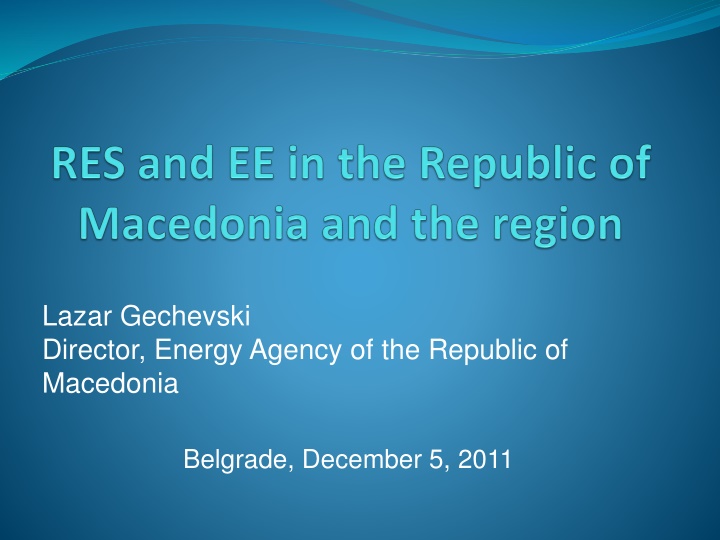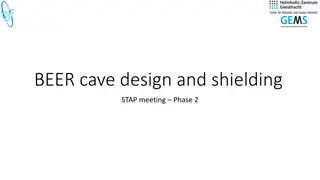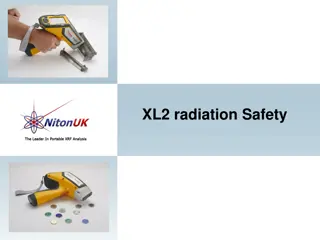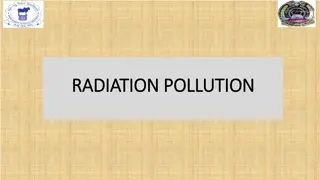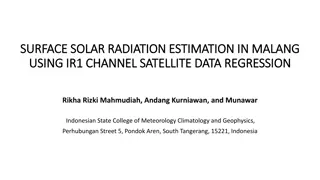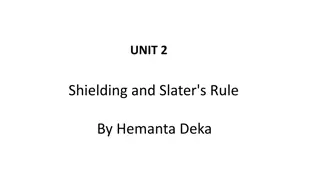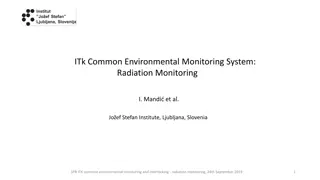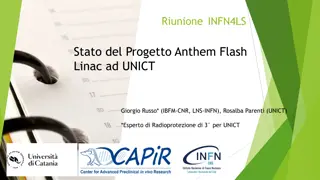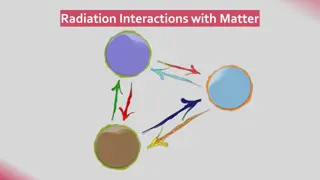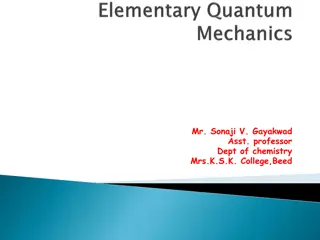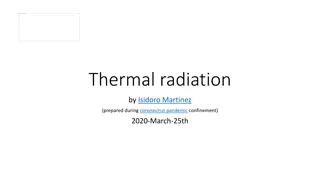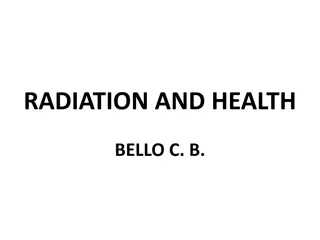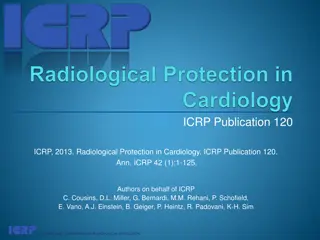ENDF/B-VI Coupled Photon-Electron Data for Radiation Shielding Applications
Enhancing radiation shielding with improved photon and electron data libraries for accurate simulations using Monte Carlo methods. Explore the advancements in photon-electron coupling, fluorescence, and Auger electrons. Discover the significance of EPDL97, EEDL, and EADL data libraries in understanding photon and electron interactions with matter, including photon and electron production and atomic relaxation processes.
Download Presentation

Please find below an Image/Link to download the presentation.
The content on the website is provided AS IS for your information and personal use only. It may not be sold, licensed, or shared on other websites without obtaining consent from the author.If you encounter any issues during the download, it is possible that the publisher has removed the file from their server.
You are allowed to download the files provided on this website for personal or commercial use, subject to the condition that they are used lawfully. All files are the property of their respective owners.
The content on the website is provided AS IS for your information and personal use only. It may not be sold, licensed, or shared on other websites without obtaining consent from the author.
E N D
Presentation Transcript
Lazar Gechevski Director, Energy Agency of the Republic of Macedonia Belgrade, December 5, 2011
General information for the Republic of Macedonia 25.713 km2-area. Population : 2,1 million. The supply of energy is based on domestic fossil fuels and hydro power. The rest is provided from imported gas, liquid fuel and coal. Total energy demand is about 120.000 TJ. 57 GJ per capita. Electricity consumption is about 9.000 GWh. Import of electricity 3.000 GWh (500 /annually).
Final energy consumption planned for 2011 Geothermal energy Wood for heating Electricity Natural gas Coal Oil fuels Cox Other solid fuels
Final energy consumption by sector in % . Industry 34% Transport 20% Households 29% Trade and public services 13% Agriculture /Forestry 2% Other sectors 2%
Production of electricity 24% Coal Oil Hydro 4% 73% 72%
Legislation in Republic of Macedonia New Energy Law (in force from 18.02.2011) Strategy for energy development Strategy for energy efficiency Strategy for the use of Renewable Energy Sources Action plan for Energy Efficiency National feed-in Tariffs Act for limitation of installed capacity Rulebook for Renewable energy sources Rulebook for obtaining status of preferential producer of electricity produced from highly efficient plants with combined production Rulebook for issuing Guarantees of origin for production of electricity produced from RES and highly efficient plants with combined production
Responsibilities of the Energy Agency of the Republic of Macedonia Participation in the preparation of strategies and action plans for energy ( EE and RES) Development of the national energy balance Trainings and exams for future energy auditors Review of 3-year Strategy plans and one-year reports on EE and RES of all 84 municipalities Issuing approvals to measure wind energy Issuing certificate for obtaining the status of preferential producer of electricity from RES and highly efficient cogeneration plants Issuing guarantees of origin for electricity produced from RES and highly efficient cogeneration plants Implementing donor energy projects.
Plants that produce energy from RES and use feed-in tariffs Photovoltaic plants Small hydropower plants Number of plants 8 8 Total installed capacity(kW) 1468 3689 Planned annual production (MWh) 2016 18394 The construction of the first wind park in the Republic of Macedonia has started
Feed-in tariffs in the Republic of Macedonia Type of plant Preferential tariff in c/kWh Years 20 Small hydropower plants 1 - 1 020 000 kW 12.00 1 020 001 2 040 000 kWh 8.00 2 040 001 4 200 000 kWh 6.00 4 200 001 8 400 000 kWh 5.00 8 400 001 kWh 4.50 20 Wind parks 8.90 20 Bio gas installed capacity 500 kW 15.00 > 501 2000 kW 13.00 20 Bio mass - installed capacity 1000 kW 11.00 > 1001 kW 3000kW 9.00 Photovoltaic installed capacity 15 50 kW 11.00 > 51 1000 kW 9.00
Current state with EE in Republic of Macedonia Stagnation with bylaws: The preparation of the Rulebook for Energy Audits is in progress The preparation of the Rulebook for Energy performance of buildings is in progress The Energy Agency has developed Guide for implementing EE measures in public procurements
Obstacles in the EE development Still there are no nationally certificated energy auditors There are no energy passports (labels) for buildings The EE measures are not taken into consideration while planning and designing buildings The agency has developed Guide for implementing EE measures in public procurements The local self-government is lacking resources (financial and human) for the preparation of quality EE plans Insufficient education of the population
Steps for improving the energy situation in Macedonia To simplify the administrative procedure for becoming preferential producer of electricity from RES To accept policy of stable feed-in tariffs To carry out trainings of staff in local self-government Loans and grants for energy projects to be instructive and easily accessible To enact separate law on RES and EE To be considered the possibility of existence of Ministry of Energy and Environment
Current state in the region All countries of South-East Europe have signed the Energy Community Treaty which implies that they all have same obligations The countries have alike policies All distribution systems are still in development The region has huge potential for the use of RES Balkan countries have old inefficient buildings with same characteristics Low prices for electricity
Prices for electricity in the region - Macedonia has the lowest price
Index of sustainable development - At calculating the index, are considered: (1) the position of institutions in each country, (2) the openness of the energy market and (3) the achieved results * : EBRD 2008
Presence of different sources of electricity consumed in the region -2% 10% 41% Solid fuels 41% 13% Oil 34% Gas 13% Renewables 10% Other 2% 34%
Steps that will improve the energy situation Joint work for the integration of EU Directives into national legislation Increasing regional international cooperation Setting up feasible regional strategy to attract foreign investments Transparency and increased cooperation on every field Raising public awareness and increased education of the population in the region
Thank you for your attention! Contact: ea@ea.gov.mk www.ea.gov.mk
